While in these pages we generally strive to provide fairly thorough coverage of upcoming yamim tovim and the like, there is one festival that does not get featured as frequently – the \Yom Tov of Sukkos. This is mostly for technical reasons related to production scheduling and its close proximity to other seasonal events. In any event, this week’s parshah – which contains an entire section detailing the various festivals (including, of course, the festival of Sukkos) – gives us an opportunity to make up some lost ground, so to speak. As such, we shall attempt here to focus on a certain practice of Sukkos, which serves to illuminate the overall Yom Tov.
Enter, Sacred Guests
One of the curious institutions of the Sukkos holiday is the practice of welcoming the “Ushpizin,” the illustrious Biblical figures who grace our sukkos during the course of the festival. The Zohar describes the exalted occurrence of sharing our sukkos with these righteous figures: בְּשַׁעְתָּא דְבַּר נַשׁ יָתִיב בְּמַדוּרָא דָא צִלָא דִמְהֵימְנוּתָא שְׁכִינְתָּא פָּרְסָא גַדְפָהָא עַלֵיה מִלְעֵילָא… אַבְרָהָם וְחַמְשָׁא צַדִיקַיָיא וְדָוִד מַלְכָּא שַׁוְיָן מְדוּרֵיהוֹן עִמֵיהּ… וּבָּעִי בַּר נַשׁ לְמֶחְדֵי בְּכֹל יוֹמָא וְיוֹמָא בְּאַנְפִּין נְהִירִין בְּאוּשְׁפִּיזִין אִלֵין דְשַׁרְיָין עִמֵיהּ – “At the time that a person dwells in this residence (i.e. the sukkah, which is known as) the ‘Shelter of the Faithful One (Hashem),’ the Divine Presence spreads its wings over him from Above… And Avraham, the five righteous figures (Yitzchak, Ya’akov, Yosef, Moshe, Aharon), and King David likewise establish their residence with him… A person should thus rejoice each day, with a shining countenance, together with these Ushpizin who reside with him.”
What is not readily apparent about this event, however, is its relevance to the festival. Granted, the Zohar states that they come to visit the sukkah – but why did they choose this specific time and this specific mitzvah? Why not come instead to join us at the Pesach Seder or while we light the menorah on Chanukah? Is there some inherent connection to Sukkos?
Actually, as we shall see, it might be practical considerations that spur their visit in this particular venue. To better understand this, there are some fundamentals about the world in general that we first need to clarify. A certain quality of the Beis Hamikdash (Holy Temple) will help bring this idea into stark relief.
Pristine Location
We get some idea of the other-worldly quality of the Temple site from a well-known Mishnah in Pirkei Avos (5:5):
עֲשָׂרָה נִסִּים נַעֲשׂוּ לַאֲבוֹתֵינוּ בְּבֵית הַמִּקְדָּשׁ. לֹא הִפִּילָה אִשָּׁה מֵרֵיחַ בְּשַׂר הַקֹּדֶשׁ, וְלֹא הִסְרִיחַ בְּשַׂר הַקֹּדֶשׁ מֵעוֹלָם, וְלֹא נִרְאָה זְבוּב בְּבֵית הַמִּטְבְּחַיִם, וְלֹא אֵרַע קֶרִי לְכֹהֵן גָּדוֹל בְּיוֹם הַכִּפּוּרִים, וְלֹא כִבּוּ גְשָׁמִים אֵשׁ שֶׁל עֲצֵי הַמַּעֲרָכָה, וְלֹא נָצְחָה הָרוּחַ אֶת עַמּוּד הֶעָשָׁן, וְלֹא נִמְצָא פְסוּל בָּעֹמֶר וּבִשְׁתֵּי הַלֶּחֶם וּבְלֶחֶם הַפָּנִים, עוֹמְדִים צְפוּפִים וּמִשְׁתַּחֲוִים רְוָחִים, וְלֹא הִזִּיק נָחָשׁ וְעַקְרָב בִּירוּשָׁלַיִם מֵעוֹלָם, וְלֹא אָמַר אָדָם לַחֲבֵרוֹ צַר לִי הַמָּקוֹם שֶׁאָלִין בִּירוּשָׁלַיִם.
“Ten miracles were wrought for our forefathers in the Beis Hamikdash: No expectant mother ever miscarried on account of smelling the sacrificial meat; the sacrificial meat never went putrid; no fly was ever spotted in the slaughterhouse; the Kohein Gadol was never disqualified through defilement on Yom Kippur; the rains never extinguished the fire burning on the wood-pile arrangement (atop the altar); the wind never disrupted the smoke-column (arising from the altar); there was never a disqualifying blemish found in the (grain offerings of the) omer (brought on the second day of Pesach), double-loaves (of Shavuos) or the (weekly) show-bread; while the worshippers were packed tightly together, they were able to bow with expansive room; no snake or scorpion ever caused harm in Yerushalayim; and no one ever complained of lacking a place to lodge in Yerushalayim.”
What is somewhat noteworthy about this list is that the bulk seem to focus more on “negatives” – nothing unpleasant, of course, but more of an emphasis on what misfortunes were avoided as opposed to actively miraculous events. There were actually other such miracles that took place in the Temple – one example would be the decorative golden trees that actually bore fruit (cf. Yoma 21b).
In his commentary, the Chassid Ya’avetz explains that the list in our Mishnah was quite deliberately selected, as it focuses on a common theme. Notice that most of the items feature a notable lack of expected deterioration: “the sacrificial meat never went putrid; no fly was ever spotted in the slaughterhouse;” etc. This is because the Mishnah’s purpose is not simply to recount miraculous events, but to convey the nature and type of atmosphere that prevailed in the Beis Hamikdash. What it chiefly represented was the original, pristine state of the world – as it existed in Gan Eden, prior to Adam’s ejection on account of his sin. The hallmark of the Gan-Eden form of existence was that it was completely pure and unblemished. The notion of “kilkul” – deterioration – was only introduced to the world as a consequence of sin. But when the world was entirely pristine, nothing ever spoiled, withered, or suffered any degradation. Of course, this all changed with Adam’s sin, but there remained one corner of the world where the original, blessed order still prevailed. And that was in the Beis Hamikdash.
Unfortunately, we no longer have the Beis Hamikdash with us. But there is still one place where a similar situation is replicated – in the sukkah on the Sukkos festival.
The Nesivos Shalom (vol. II, p. 207) explains that when one enters the sukkah during the Yom Tov of Sukkos, he is enveloped in an atmosphere of supreme sanctity. As we have seen from the Zohar cited above, the sukkah effectively serves as the resting place for the Shechinah itself. Thus, the environment is somewhat reminiscent of that which was present in the Beis Hamikdash. The Beis Hamikdash was a specially designated location that transcended the regular bounds of the atmosphere that prevailed in the rest of the world; it was one small corner in which the pristine conditions of Gan Eden were preserved. In a similar sense, explains the Nesivos Shalom, a remarkable effect is achieved in the sukkah. It serves to transport, to some extent, the environment that exists in the Celestial spheres right down here to our (otherwise) spiritually contaminated world.
This, then, is the secret of the Ushpizin. As the Nesivos Shalom explains, their terrestrial visit coincides with this specific time and place – because it is the only instance when the conditions are refined to such a supreme extent. It is only on Sukkos – in the sukkah – that their presence can be properly accommodated. This is a circumstance which reveals the true potency of this situation: it is a Heavenly haven here on earth. That is the essence of the sukkah.







